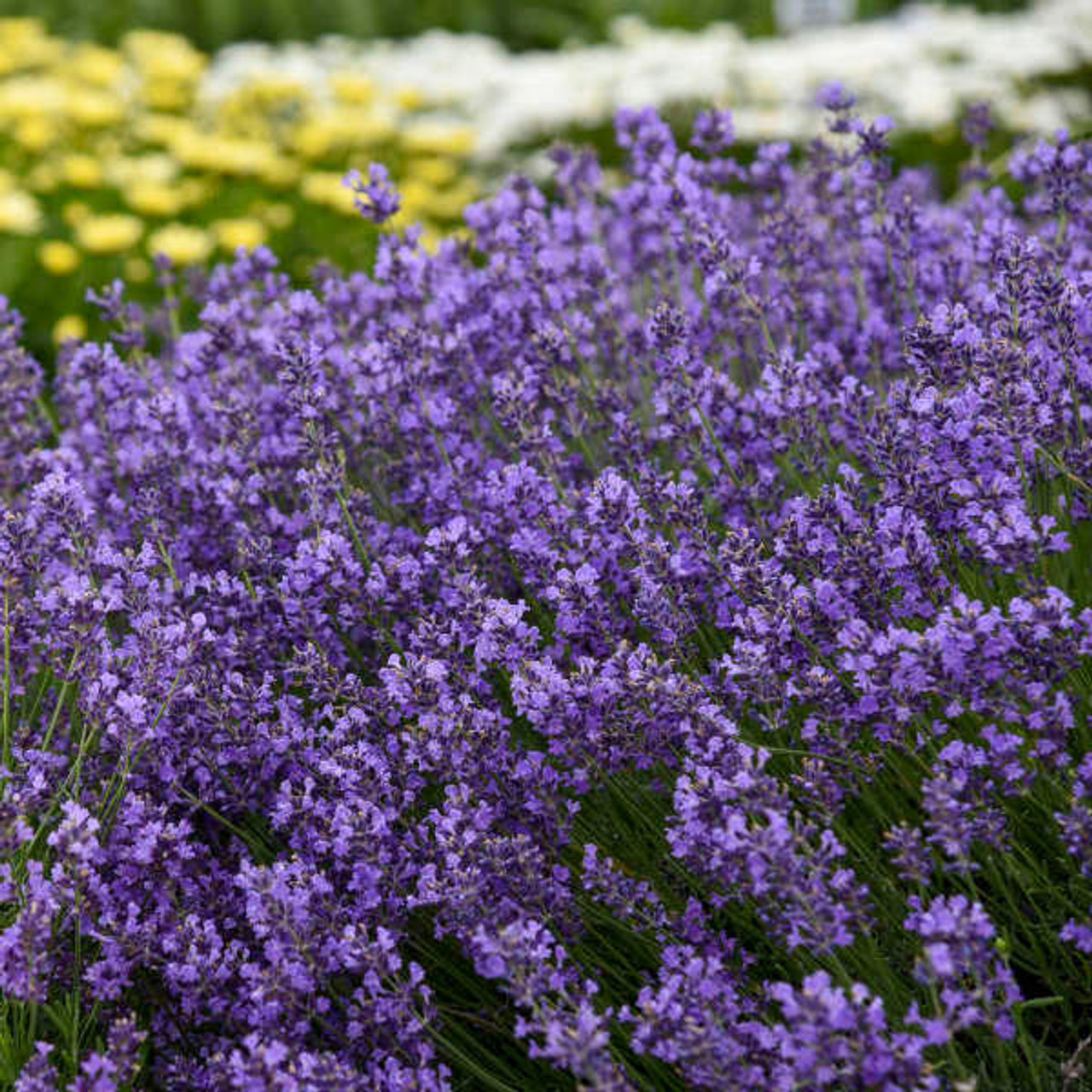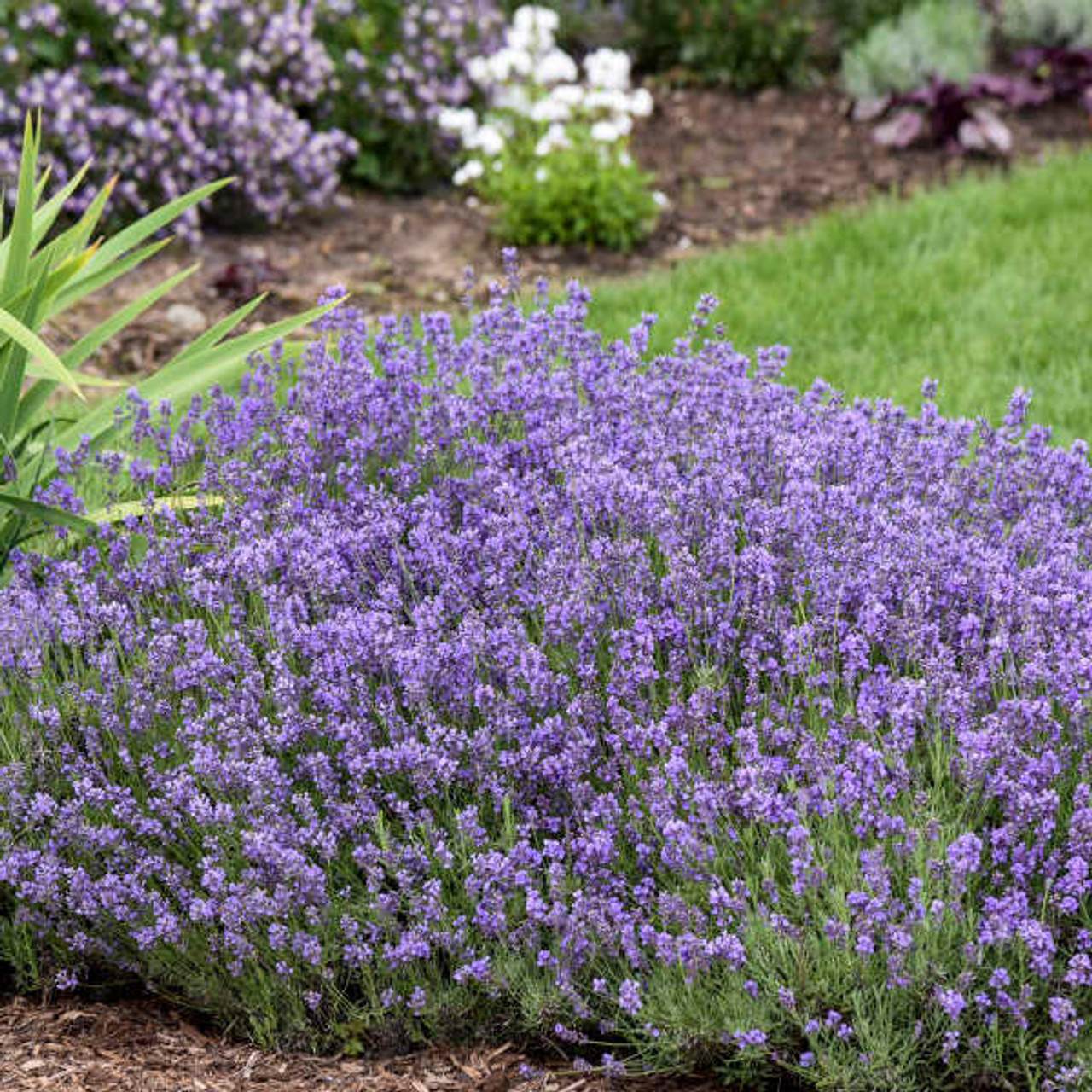Product Description
Lavandula angustifolia 'Munstead' (20)ct Flat
Common Name: English Lavender
Rich lavender flower spikes fill the air with their sweet, intoxicating fragrance all summer long. Though this cultivar was introduced to the trade in 1916, it remains one of the most popular today. Its compact habit and relatively short stature make it a good choice for edging. This is often said to be the hardiest variety of all Lavender. It is very similar to 'Hidcote'.
Lavender must be grown in full sun to be able to produce flowers, so do not hesitate to plant them in those hot, dry areas where nothing else seems to grow. They will actually grow better in poor, gravelly soil than in rich humus; don't be tempted to enrich the soil when you plant it. Sharp drainage, especially in winter, is essential for preventing crown rot. Other than that, Lavender is known to have few problems with pests and diseases. Shearing back the evergreen foliage in early spring will rejuvenate plants and stimulate new growth.
Lavender has been grown for centuries for its intensely fragrant flowers and beautiful appearance. It is a staple item of every sunny garden, and its dried flowers are widely used in potpourris and arrangements.
Chicago Botanic Garden Plant Evaluation Top Performer -- 2017
Height: 12.0-16.0 Inches
Spread: 12.0 Inches
Hardiness Zones: 5,6,7,8,9
Flower Color: Purple shades
Foliage Color: Green shades
Full Sun (> 6 hrs. Direct Sun)
Low Water Needs
Poor Soil Quality
Bloomtime: Late Spring - Late Summer
Attracts Butterflies
Bee Friendly
Deer and Rabbit Resistant
Seasonal Interest: Dried Seed Heads
Evergreen
Growth Rate: Medium
Border Plant, Container, Cut Flower, Cut Foliage, Dried Flower, Drought Tolerant, Edging, Fragrant Flowers, Fragrant Foliage, Mass Planting, Small
Twenty (20) plants per flat (or tray). Approximate Plug Measurements: 3.25 inches deep x 2.6 inches wide
Other Details
Shop Our Plants!
Welcome to our online plant nursery! We are happy to offer a wide variety of plants to everyone, not just other nurseries, through this website.
Free Flexible Shipping on Most Plants
- We offer free shipping on most plant orders, with exceptions due to state regulations or distances.
- We understand that planning is important! Choose your preferred shipping week when you add each plant to your cart, subject to availability.
Shipping Details
From protective packaging to delivery tracking, we ensure your plants arrive happy and healthy.
- Our specialized boxes help keep your plants safe during their journey.
- Track Your Plants: Once plants are shipped (typically Monday to Wednesday), we will email the tracking number and delivery updates.
- Plant Guarantee: We guarantee your plants will arrive in good condition. In some cases, we may carefully trim them before packing to optimize their health during shipping.
We are Also Here to Help with Additional Care and Growing Tips
- Bare Root Perennials
- Container Sizes
- Order / Shipping
- Planting Care and Instructions
- Plant Calculator
- Specific questions can be asked on each plant page.



















